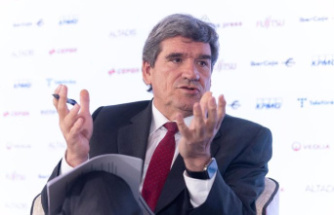Caption
Close
Albany
Drug price controls, the adequacy of Medicaid payments and expanding the power of the Health Department were among the topics discussed at a legislative hearing Thursday on Gov. Andrew Cuomo's proposed budget for health and Medicaid.
An underlying theme was uncertainty about what action President Donald Trump and a Republican-led Congress might take on the Affordable Care Act, which could affect health insurance subsidies for New Yorkers, and funding for women's reproductive health clinics, including Planned Parenthood.
"Much is happening in Washington," state Health Commissioner Howard Zucker told lawmakers. "If the ACA were repealed, that would be a major concern, with millions of people potentially losing health care."
The 2017-18 state spending plan calls for a 3.2 percent rise in spending on Medicaid to more than $65 billion; a 10 percent hike in non-Medicaid state Health Department spending to almost $4.8 billion; and a 13.2 percent increase in funding (to $4.2 billion) to subsidize health insurance coverage for New Yorkers whose income puts them just over the Medicaid eligibility limits.
At a time of skyrocketing prices for a small range of pharmaceuticals, the governor's plan calls for the state to cap prices on some drugs and impose a surcharge on drugmakers who exceed it.
State Medicaid Director Jason Helgerson said the plan would focus on drugmakers that take advantage of a lack of competition afforded by initial patent protections to place exorbitant prices on life-saving or life-changing drugs. Pricey drugs for hepatitis C, which cost about $90,000 for a full treatment, have created significant challenges for the Medicaid program, he said.
Assemblyman Richard Gottfried, a Manhattan Democrat, expressed frustration over a lack of detailed information from the Health Department. Gottfried wondered if it would make sense for the price-control plan to include more drugs, such as commonly prescribed antibiotics. Helgerson said that was not how the program was conceived. Health officials see the plan as a deterrent that will prevent bad actors from overpricing, he said.
"Our goal with this proposal is not to put any manufacturer in the penalty box," Helgerson said. "Our goal is they change behavior."
Health officials said they were confident the plan would withstand legal scrutiny. The pharmaceutical lobby this week questioned whether the proposal was legal, saying a federal court struck down a similar law in Washington.
Several lawmakers made clear their distaste for a proposal that would give the Health Department the power to act quickly, without legislative approval, in a fiscal emergency, such as if the federal government abruptly cut off Medicaid funds.
Long Island Republican Kemp Hannon, chair of the Senate Health Committee, called the proposal "an extraordinary request for powers that have hitherto not been seen with the executive."
The intent, Helgerson explained, is to be able to preserve current programs in case of a revenue shortfall, not to bypass legislative approval to create new initiatives.
Sen. Gustavo Rivera, a Democrat from the Bronx, pushed back over the language of the proposal, telling health officials it was "broad enough for you to make these decisions without coming back to us."
Lawmakers also questioned the continued value of a cap on state Medicaid spending. Helgerson defended the cap as a tool that has helped officials keep a tight rein on expenses. But Hannon said the cap had "outlived its purpose," becoming "too flexible."
Sen. Diane Savino, a Staten Island Democrat, said one place the cap has created problems is in Medicaid payments for ambulance services, which have not seen increases since 2008. Sprinkled throughout the hearing audience were EMS staff in white uniforms.
"We will be losing people," Savino said about emergency responders. "We will be losing them to fast food work."
Our editors found this article on this site using Google and regenerated it for our readers.













